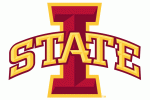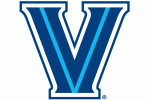We are three weeks away from Selection Sunday and about two weeks away from the end of the regular season. If you've been following throughout the year you've heard me discuss in detail about the factors the Selection Committee takes into consideration, how the RPI has influenced the At-Large selection process in the past, and where teams stand in the race for At-Large bids. We've started to see Joe Lunardi's Last Four In/First Four Out graphic popping up on ESPN broadcasts. Lunardi is good at what he does and very dedicated, but his word is not gospel truth.
If the tournament were to start today, there shouldn't be any doubt that Indiana and Miami would be two of the number one seeds. However, there is some debate behind them about which teams deserve the other two spots on the top line.
Duke has the best computer profile in the nation (RPI 1, SOS 2, NCSOS 1) and the second most Top 50 wins (8, trailing only Kansas who has 10). All of Duke's losses came on the road, with two coming to teams in the top 25 of the RPI and one coming to Maryland whose RPI is hovering around 70. Duke's 13-3 record against the Top 100 is tied for the best in the nation with Kansas (also 13-3).
Based on that paragraph alone you would think that Kansas would be in the discussion for a top seed, but their loss to TCU (RPI 241) is a giant knock on their resume. In fact, Kansas is the only team in the Top 12 of the RPI with a loss outside the Top 100. Kansas has solid computer numbers (RPI 5, SOS 7, NCSOS 18), but their loss to TCU is keeping them out of the discussion for a top seed right now.
The Big East is a mess right now, with Syracuse, Georgetown and Marquette tied atop the league with 10-3 records. Georgetown and Marquette both have losses outside the Top 100, which holds them out of the conversation for now. Louisville has the best resume of the group with 6 Top 50 wins, 10 Top 100 wins, and solid computer numbers (RPI 6, SOS 8, NCSOS 29). However, I have a hard time seeing Louisville being seeded above Syracuse if Syracuse wins the automatic bid from the conference. The Orange's profile is solid but not spectacular with 4 Top 50 wins, 11 Top 100 wins, a good RPI and SOS (10 and 24 respectively), but an underwhelming non-conference slate (NCSOS 90). At this point, Syracuse seems more in line to be on the bubble between a 2 and 3 seed, along with Kansas, Louisville and Arizona.
The Big Ten has clearly been the best conference in the nation this season, and I would be remiss in talking about candidates for the top line without mentioning two teams from Michigan. Michigan State holds a slight edge over Michigan right now in most key categories, but it's close. Michigan State has a 7-5 record against the Top 50 while Michigan is 6-4. Sparty's computer numbers (RPI 7, SOS 6, NCSOS 48) are also slightly better than the Wolverines (RPI 11, SOS 32, NCSOS 126). On top of all that, Michigan State has a win in the one head-to-head meeting between the two teams, a 23-point demolishing of Michigan in East Lansing.
The Bubble
To call the bubble a mess right now wouldn't even come close to describing it. By my best count, there are 24 teams currently in the discussion for the last 8 spots in the field. Trying to sort between 24 different resumes can be difficult, so the best thing to do is to start eliminating teams at the bottom. The first thing I look for in a team is quality wins, preferably multiple wins against quality opponents. So even though Joe Lunardi is somehow convinced that Southern Miss is in the "First Four Out" category right now (probably due to their RPI of 35), my first step is to eliminate most of the teams without a win in the Top 75. If you're going to be considered one of the 37 best At-Large teams, you should be able to beat someone in the Top 75. This immediately knocks out Southern Miss (2-5 vs Top 100, best win over #88 Denver) and BYU (3-7 vs Top 100, best win over #88 Tennessee St). Florida St is 0-7 against the Top 50 but has 2 wins over teams with RPIs in the 50s. However, their 4 losses against teams with 100+ RPIs is simply too much to overcome. St Mary's has been shooting up the list lately due to their emergence in the Top 50 of the RPI and their 4-3 record against the Top 100. However, the Gaels are winless against the Top 50, have 2 losses to teams with RPIs in the 130s, and played a dreadful non-conference schedule (NCSOS 211).
Texas A&M actually has a winning record (7-5) against the Top 100, but their 1-5 mark against teams ranked between 100 and 200 knocks them out of the field. Arkansas has been excellent at home this season with wins over Florida and Missouri, but their downright dreadful 1-6 road record and RPI in the high 70s knock the Razorbacks out of contention. Wyoming breezed through a terrible non-conference slate (NCSOS 234) but has struggled in conference play, going only 4-8. Seven of their eight losses have come against Top 100 teams, but their 3-7 record against the Top 100 just isn't enough to make their case.
The next set of teams is very similar in that their resumes don't have anything terrible but also nothing outstanding. Stanford has been mediocre all season and they haven't beaten a team in the Top 40 all year. The Cardinal currently don't have any losses to 100+ RPI teams, but they were swept by USC (RPI 99) and are just 5-11 against the Top 100. Charlotte has wins over Butler and La Salle but also losses to George Washington and Richmond. There is really nothing on the 49ers resume to get excited about. UMass is similarly mediocre in the A-10 with just 1 win against a team in the Top 70 (La Salle). The Minutemen do have 6 Top 100 wins but 5 of them came over teams ranked between 72 and 100.
The next group to eliminate is the polar opposite of the prior group - teams that have recorded numerous quality wins and taken some horrible losses. The three teams in this group (Arizona State, Virginia, Alabama) all have winning records against the Top 100 with each having 6 Top 100 victories. However, their bad losses currently preclude them from making the field. Arizona State has dropped 2 games outside the Top 100 to DePaul and Utah and played a terrible non-conference slate (NCSOS 299). Similarly Virginia's NCSOS of 306 is extremely prohibitive considering their 6 losses to teams with triple-digit RPIs. Alabama has 4 losses to teams with 100+ RPIs and just 1 win over the Top 50, which came over a Kentucky team barely clinging to the top 50 designation.
Of the remaining teams, North Carolina has the best RPI of 26, and despite having just 1 Top 60 win, the Tar Heels have good computer numbers and only one bad loss (#129 Texas), which at this point should be enough to get them in. Iowa State just scored a big victory over fellow bubble team Baylor, and despite two bad losses, the Cyclones 7 Top 100 wins is more than any of the remaining teams, which should be enough to get them in.
Temple just picked up a resume-improving win over La Salle to bring their record against the Top 50 to an even 3-3, making them one of just 3 remaining teams with a winning record against the Top 50. Like Iowa State, Temple also has 7 Top 100 wins, which should be enough to put them in despite some bad losses on their slate. Ole Miss suffered their worst defeat of the season against South Carolina this week, but the Rebels 4-2 mark against the Top 100 and only 1 bad loss should be enough to barely get them in the field as of now.
All of the remaining teams have losing records against the Top 100, but three of them (Baylor, Villanova, St John's) lead the way with 6 Top 100 wins. Baylor played a Top 40 non-conference slate and dropped some games early in the year to bad teams, with their two worst losses coming out of conference. Villanova has been up and down all year, but have navigated the tough Big East and managed a winning record in conference play. The Wildcats also have the best "top two" wins of any team on the board with wins over Syracuse (RPI 10) and Louisville (RPI 6). These quality wins should be enough to get Villanova into the Dance. Fellow Big East team St John's played a poor out-of-conference schedule and dropped 3 games to teams with 100+ RPIs, including two to teams with RPIs over 150. Their 3-4 record against the Top 50 gives them the best winning percentage in that category amongst the remaining teams and should slide them into the field.
And now it comes down to the difficult decision: four teams remain looking at just one spot in the field. Kentucky, Boise State, Tennessee and Maryland all have problems with their resumes, so it comes down to a matter of comparison.
Looking at Tennessee and Maryland side-by-side, the Volunteers clearly have the advantage. While Maryland has better wins than Tennessee, the Vols have more Top 100 wins and a loss that isn't as bad as Maryland's worst loss. Additionally, Tennessee played a much tougher schedule out of conference, which is something the Committee likes to see.
This one is honestly a toss-up. Kentucky has no good wins and no bad losses (no losses outside the Top 75) while Boise has two losses to teams with RPIs in the 160s. Both teams are similarly bad away from home but have decent RPI and SOS numbers. Kentucky has a distinct advantage in it's non-conference schedule and this is where I give the Wildcats the slight edge over Boise.
Two SEC teams remain for the final spot in the bracket. While Tennessee has a better record against the Top 50, one of those wins was over Kentucky while Kentucky's win over Tennessee is only a Top 100 win because of Tennessee's lower RPI. Tennessee has two losses that are worse than Kentucky's worst defeat and have a worse record in conference play. The deciding factor here, since both teams are from the same conference, is that Kentucky has a better overall and conference record than Tennessee. Therefore, Kentucky (by the slimmest of margins) gets the last spot in the field.
Of course, these are all just my estimations and my logic based on the numbers as they stand today. Things will change over the next 3 weeks and hopefully some teams will separate themselves from the other bubble teams. For those interested, you can see how my current bracket prediction looks here.








































